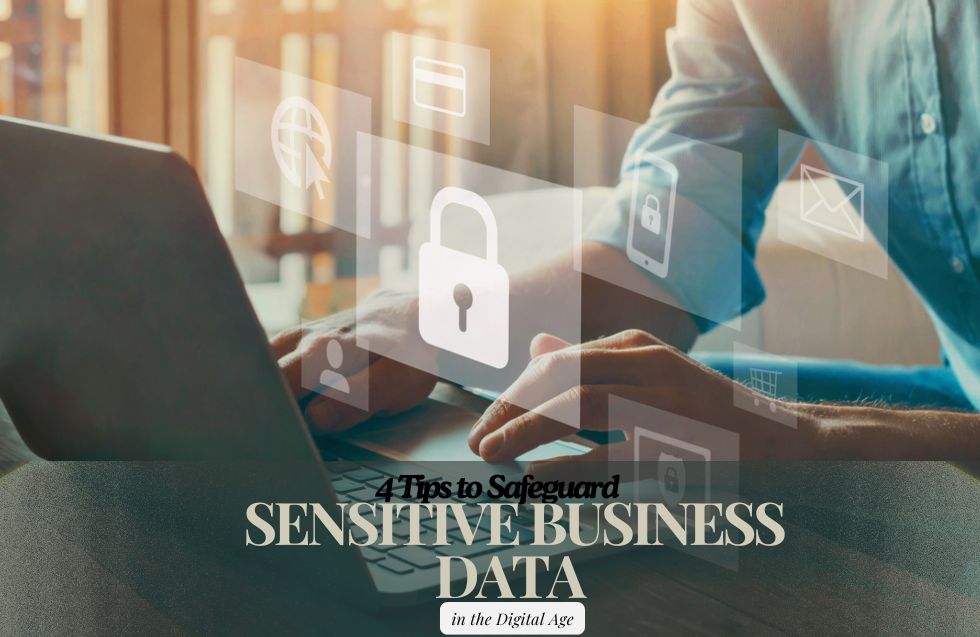In today’s digital landscape, safeguarding sensitive business data is more crucial than ever. With increasing cyber threats, businesses must implement robust strategies to protect their information.
Effective data protection secures confidential information and builds trust with customers and partners. Prioritizing cybersecurity allows companies to reduce the risk of data breaches and maintain a competitive edge in their respective industries.
Read on to discover the four tips for safeguarding your sensitive business data in the digital age.
1. Conduct Regular Security Audits and Training
Continuous monitoring and training are essential components of effective data protection. Regular security audits help identify vulnerabilities, while employee training ensures everyone understands their role in data security. Establishing a robust cyber security management framework is crucial in guiding these efforts and maintaining a proactive approach to safeguarding business information.
To stay prepared and minimize risks, focus on the following areas:
- Scheduled audits: Regularly assess your cybersecurity measures through scheduled audits. This process helps uncover vulnerabilities, ensuring that your defenses remain up-to-date and effective. Routine audits also provide valuable insights into areas that need improvement, allowing you to make informed decisions about security upgrades.
- Incident response plan: A well-developed incident response plan prepares your team to act quickly in case of a data breach. This plan should outline clear steps for containment, communication, and recovery to minimize damage. Regularly reviewing and updating the plan ensures it remains relevant to evolving threats.
- Ongoing training: Consistent training programs teach employees how to recognize potential threats like phishing attempts and maintain safe online practices. Regular refreshers help reinforce these skills and adapt to emerging risks. Tailoring the training to different roles within the company can also increase its effectiveness.
- Simulated attacks: Running simulated cyber-attacks allows businesses to test their defenses and gauge employee reactions in real-time. These exercises help uncover weaknesses in both systems and response strategies. Regular simulations also improve response times, ensuring that teams can act swiftly in the event of an actual attack.
Incorporating regular audits and comprehensive training into your cybersecurity management strengthens your defense systems and ensures employees actively contribute to maintaining security.
2. Establish Strong Password Protocols
Strong password management is a fundamental step in protecting sensitive information. Weak passwords can lead to unauthorized access and data breaches. It’s essential to develop a strong password policy that all employees must follow.
To create a more secure environment, the following elements should be implemented:
- Complex passwords: Ensure employees create strong passwords that include a mix of uppercase and lowercase letters, numbers, and special characters. This makes passwords harder to guess or crack.
- Regular updates: Set a policy that requires employees to update their passwords regularly, ideally every three to six months. Frequent changes reduce the risk of long-term exposure.
- Unique passwords: Require each account to have a unique password. This prevents multiple systems from being compromised if one password is breached.
- Two-factor authentication (2FA): Introduce two-factor authentication for an extra layer of security. It requires users to provide two forms of identification, reducing the risk of unauthorized access.
- Password managers: Encourage the use of password managers to store and organize complex passwords securely, helping employees manage their credentials without compromising security.
Implementing these password protocols strengthens the overall cybersecurity structure, making it more difficult for unauthorized users to access critical systems and information.
3. Implement Data Encryption Techniques
Data encryption is essential for protecting sensitive information from unauthorized access. Encrypting data ensures that even if it is intercepted, it cannot be easily deciphered.
The following are key strategies to help secure your business data through encryption:
- Encrypt sensitive files: Use encryption software to protect critical documents, ensuring that only individuals with the correct encryption key can access them. This adds a vital layer of security, especially for highly confidential information.
- Secure communication channels: Implement encryption for all communication channels, such as emails and messaging platforms. This guarantees that data transferred between parties remains private and secure, reducing the risk of interception during transmission.
- Full disk encryption: Enable full disk encryption on devices that store sensitive information. This protects the entire contents of a hard drive or device, ensuring that even if a device is lost or stolen, the data remains inaccessible to unauthorized users.
- Key management practices: Maintain strong key management protocols, including regularly rotating encryption keys and limiting access to those who need it. Regular audits of key usage help ensure encryption remains secure and effective.
- Back up encrypted data: Ensure that all backed-up data is encrypted as well. In the event of a breach or system failure, this ensures that your backup files are protected from unauthorized access.
Using these data encryption techniques can reduce the risk of unauthorized access and help safeguard your business information, providing an essential line of defense against potential cyber threats.
4. Leverage Advanced Security Technologies
Investing in advanced security technologies strengthens your defenses against cyber threats. These tools and systems help monitor, detect, and prevent unauthorized access.
To bolster your defenses and manage data access effectively, here are essential technologies to consider:
- Firewalls: Implement robust firewalls to regulate incoming and outgoing network traffic based on security rules. Firewalls serve as the first line of defense, blocking unauthorized access while allowing legitimate traffic through.
- Intrusion detection systems (IDS): IDS tools monitor network traffic for unusual or malicious activity. When a threat is detected, they alert administrators, enabling quick responses to potential attacks.
- Antivirus software: Reliable antivirus programs help detect, prevent, and remove malware. These programs are essential for protecting systems from viruses, ransomware, and other malicious software.
- Data loss prevention (DLP): DLP solutions monitor data movement within your organization, ensuring sensitive information isn’t transferred or accessed by unauthorized individuals. This prevents data leaks and safeguards confidential data.
- Regular software updates: Keeping your systems and applications up-to-date is vital for defending against vulnerabilities. Regular updates patch security holes, ensuring that your systems are protected from known exploits.
Incorporating these advanced security technologies helps businesses strengthen their defenses and reduce the risk of cyberattacks, ensuring that critical data and systems remain secure.
Final Thoughts
In an age where cyber threats are constantly evolving, prioritizing data protection is essential for every business. Consistent vigilance, supported by the right technologies and training, creates a solid defense against potential breaches. Taking these steps not only mitigates risks but also fosters a secure environment where your business can thrive confidently, knowing that your valuable data is well-protected.












